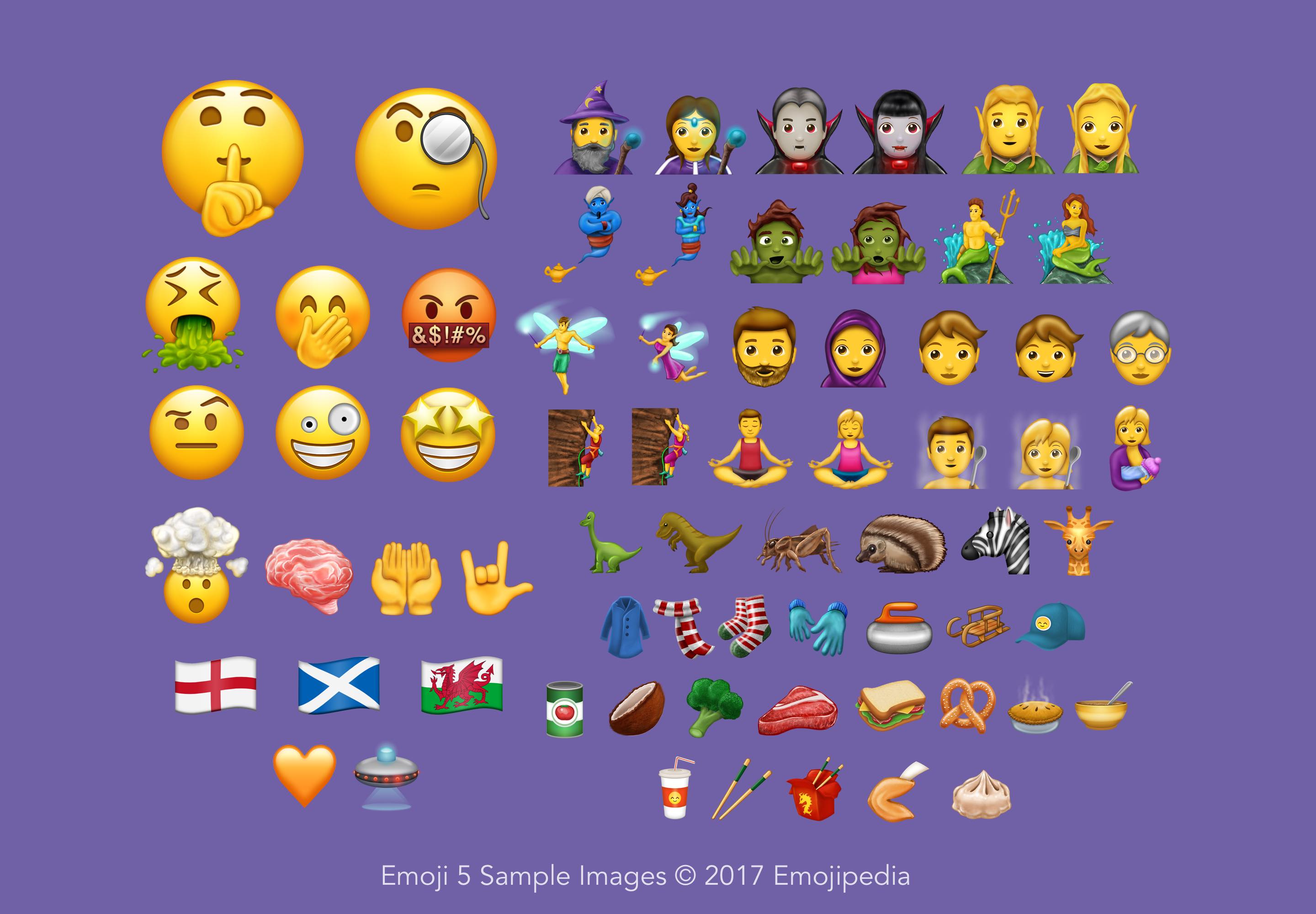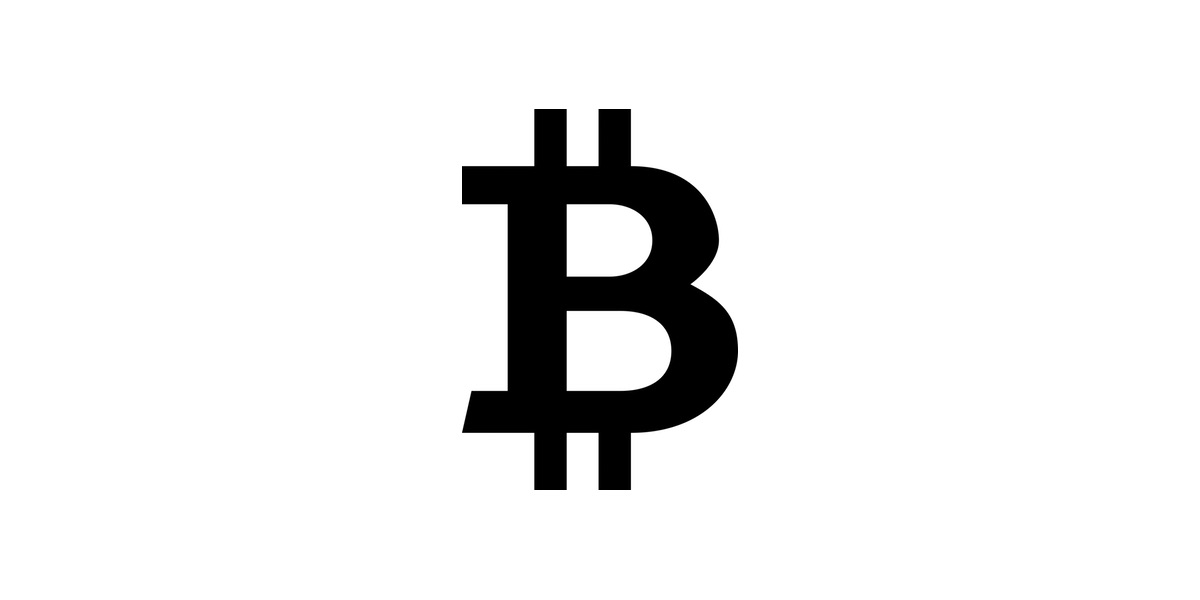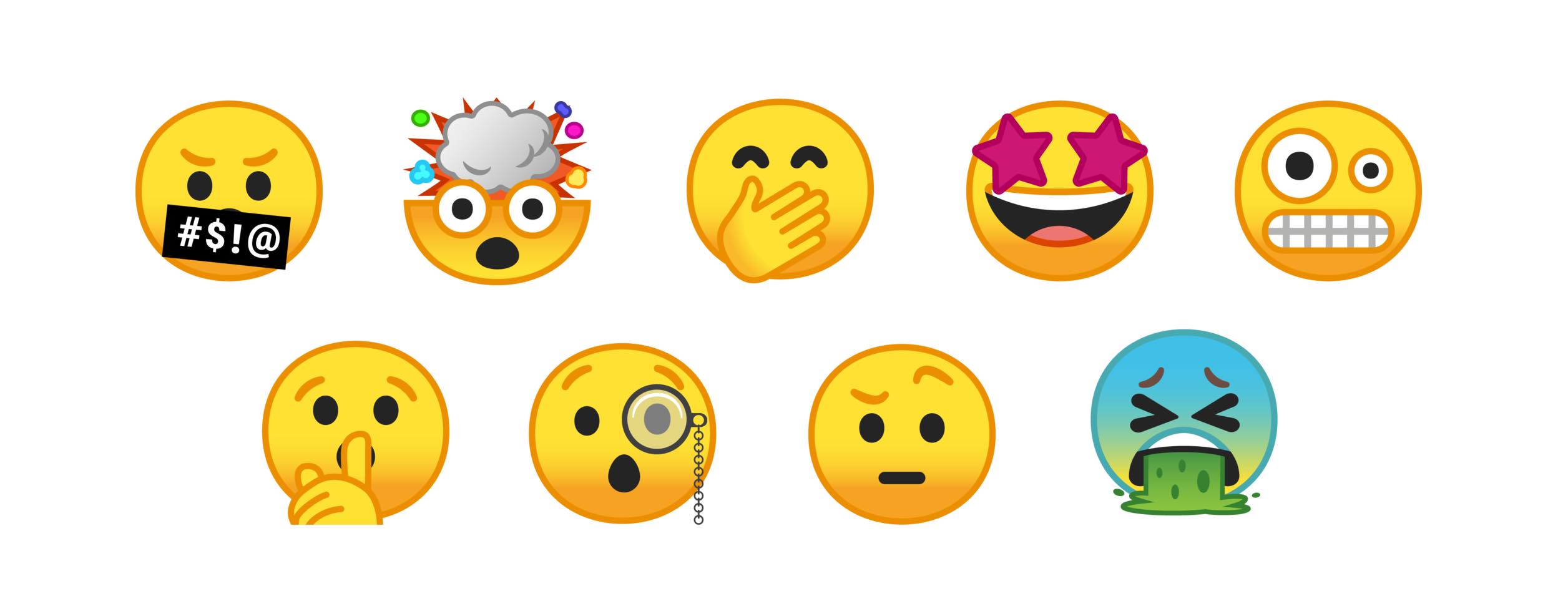What's New in Unicode 10.0

The Unicode Consortium today released version 10.0 of the Unicode Standard.
This means that the code points required for new emoji support are now considered final, and stable to be included in updates from major vendors such as Apple, Google, Microsoft or Samsung.
TL;DR: The Unicode Standard now includes two dinosaurs, the Bitcoin symbol, and the long-awaited Colbert Emoji[1].
Here's the new emojis that are now possible with the release of Unicode 10.0:

Above: Sample Images for new emojis. Image: Emojipedia.
Regarding this update, Unicode states:
"Unicode 10.0 adds 8,518 characters, for a total of 136,690 characters. These additions include 4 new scripts, for a total of 139 scripts, as well as 56 new emoji characters."
The 56 code points needed to create the 239 new emojis in Emoji 5.0 make up a relatively tiny proportion of new characters in this release.
Emoji sequences for flags, genders, and skin tones don't require additional code points.
The 56 new emoji code points in Unicode 10.0:
- 🤩 Star-Struck
- 🤨 Face With Raised Eyebrow
- 🤯 Exploding Head
- 🤪 Crazy Face
- 🤬 Face With Symbols Over Mouth
- 🤮 Face Vomiting
- 🤫 Shushing Face
- 🤭 Face With Hand Over Mouth
- 🧐 Face With Monocle
- 🧒 Child
- 🧑 Adult
- 🧓 Older Adult
- 🧕 Woman With Headscarf
- 🧔 Bearded Person
- 🤱 Breast-Feeding
- 🧙 Mage
- 🧚 Fairy
- 🧛 Vampire
- 🧜 Merperson
- 🧝 Elf
- 🧞 Genie
- 🧟 Zombie
- 🧖 Person in Steamy Room
- 🧗 Person Climbing
- 🧘 Person in Lotus Position
- 🤟 Love-You Gesture
- 🤲 Palms Up Together
- 🧠 Brain
- 🧡 Orange Heart
- 🧣 Scarf
- 🧤 Gloves
- 🧥 Coat
- 🧦 Socks
- 🧢 Billed Cap
- 🦓 Zebra
- 🦒 Giraffe
- 🦔 Hedgehog
- 🦕 Sauropod
- 🦖 T-Rex
- 🦗 Cricket
- 🥥 Coconut
- 🥦 Broccoli
- 🥨 Pretzel
- 🥩 Cut of Meat
- 🥪 Sandwich
- 🥣 Bowl With Spoon
- 🥫 Canned Food
- 🥟 Dumpling
- 🥠 Fortune Cookie
- 🥡 Takeout Box
- 🥧 Pie
- 🥤 Cup With Straw
- 🥢 Chopsticks
- 🛸 Flying Saucer
- 🛷 Sled
- 🥌 Curling Stone
From the emojis above, only the base character for gender or skin tone is listed.
Flags for England, Scotland and Wales are part of Emoji 5.0 and not shown here as they don't require new code points.

Above: The relationship between Unicode 10.0 and Emoji 5.0. Image: Emojipedia.
The final emoji list for 2017 was announced in March; with the code points required for many of these now final.
Vendors have had a few months notice on which emojis are final, and with the release of Unicode 10.0 are now clear to include support in any future software updates.[2]
*Above: Emojipedia Sample Images for Emoji 5.0.*Other popular additions include Giraffe, Dumpling, Mermaid, and people with a beard, hijab, and breastfeeding.
What Else
Unicode 10.0 now adds support for the symbol for Bitcoin.[3] This looks like a capital letter B with two vertical lines and has been granted this code point:
- U+20BF ₿ BITCOIN SYMBOL

Bitcoin symbol is a regular Unicode character, and not an emoji.[4]
Unicode 10 also adds support for "lesser-used languages and unique written requirements worldwide".
These include:
- Masaram Gondi, used to write Gondi in Central and Southeast India
- Nüshu, used by women in China to write poetry and other discourses until the late twentieth century
- Soyombo and Zanabazar Square, used in historic Buddhist texts to write Sanskrit, Tibetan, and Mongolian
- Read more
Release
Unicode 10.0 was been released June 20, 2017. The details are available now.
Vendor updates for these new emojis will vary, with most companies likely to include support in the second half of 2017.
Google revealed their new emoji support in the first beta of Android O, and Twitter added support during the Unicode 10 beta period.

Above: New emojis from Unicode 10 in Android O beta.
Apple generally updates iOS with new emoji support in September-December each year.
This often comes as part of a point update to a major iOS release, such as iOS 9.1 or iOS 10.2.
Facebook is also testing new emoji support for some users.
- Images: Every New Emoji for 2017
- Unicode 10.0 Emoji List
- Emoji 5.0 Emoji List
- Unicode 10.0 Specification
- Unicode 10.0 Announcement
🆓📰📥🌯
Sign up to our free newsletter Emoji Wrap for the latest emoji news, first.
Emailed once each month, this is the best way to stay on top of what's happening in the world of emoji. Subscribe here:
Proposal author Maximilian Merz likened this emoji to actor Maggie Smith on Downton Abbey but Unicode President referred to it as the Colbert Emoji and it stuck ↩︎
It's possible to include new emojis during a Unicode beta period, but is safer to wait for the final release in case of any last minute changes. ↩︎
The difference between a Unicode character and a Unicode emoji being that emojis are generally shown with a color display, and included on emoji keyboard interfaces. ↩︎
